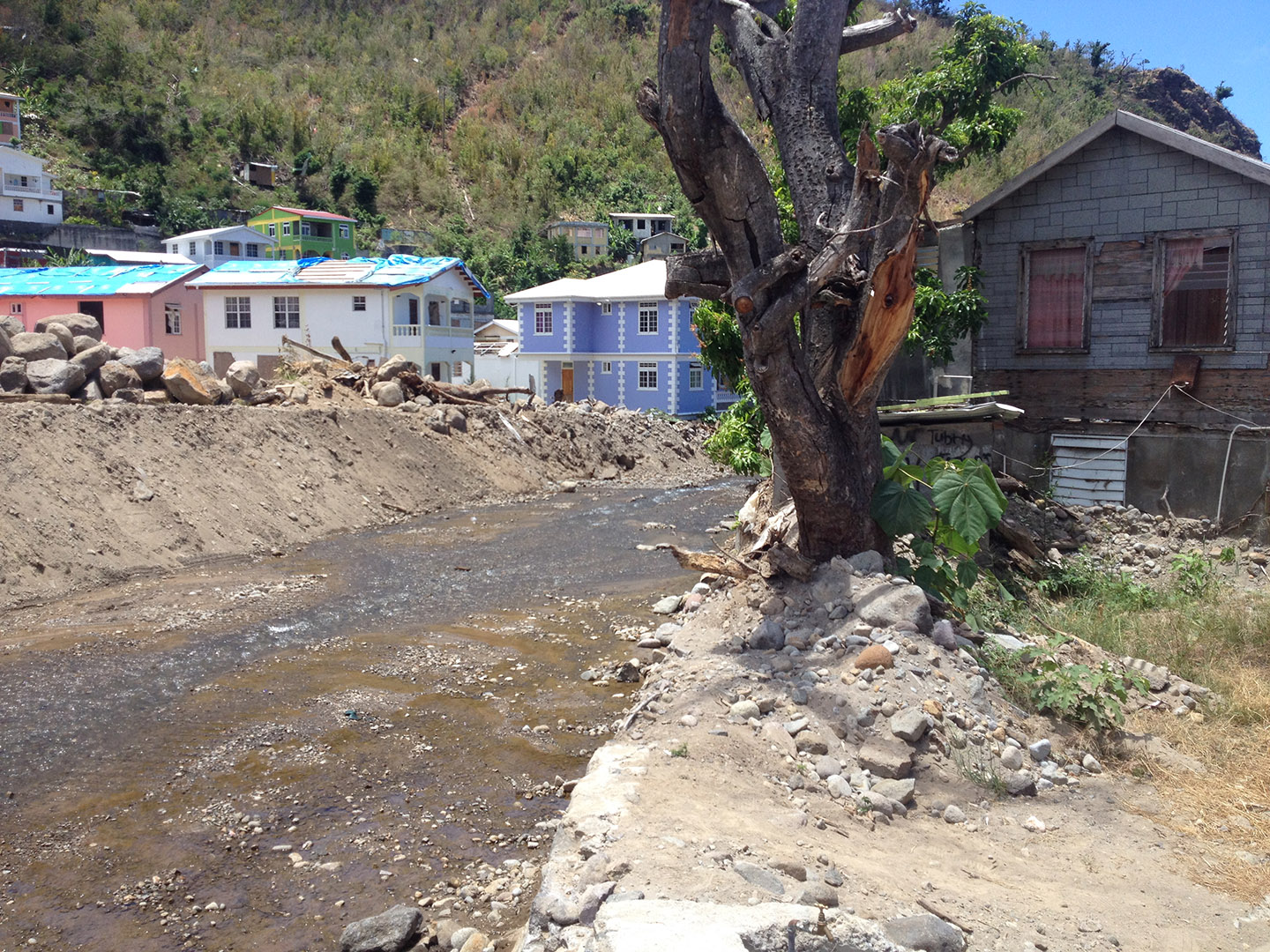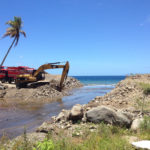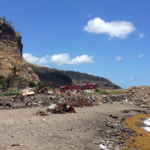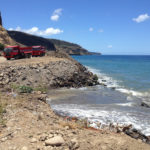
“There is already a plan for reconstruction, indelibly stamped in the perception of each resident – the plan of the predisaster city. The new studies, plans, and designs compete with the old.” – Haas, Kates, and Bowden (1977), Reconstruction Following Disaster
This post-disaster tension between change and normalcy hangs in the air in some of Dominica’s larger coastal towns, as river ‘dredging’ proceeds to remove sediment, boulders, and other debris from the mouths of the island’s 365 rivers following 2017’s Hurricane Maria (as well as 2015’s Tropical Storm Erica).
It remains to be seen whether this concern is clearly articulated: is the average Dominican concerned about the old versus the new? If so, do they want the old or the new? And, what does that new look like? How is – or is – that new vision being communicated? To what degree has it been formulated by the government?
In the case of Colihaut, a spit of new land created from fill – ‘made land’, to borrow a term from Nancy Seasholes (Gaining Ground: A History of Landmaking in Boston, MIT Press, 2003) is beginning to emerge.
The town itself is rather compact with a small park, featuring a bandstand, at the center.


As with most towns, a river flows directly through. One interviewee whose home is within 100 yards of the partially channelized stream reported six feet of water during flooding from 2017 Hurricane Maria. “The whole town flooded. Water from above, water from below. But not from the sea.”


With flat, easily developable land at a premium in mountainous, highly-sloped, landslide-risky Dominica, any ‘new’ land will surely become objects of desire for development which may compete with underrepresented open, public space. Great examples of lovely beaches are certainly to be found on the island, but due to a relatively high standard of living and level of development but still moderate to low concentration and impact of tourism, a risk presents itself that “if they build it”, more will come to small, idyllic coastal towns such as Colihaut.
Whether the Colihaut of tomorrow will be like the Colihaut of old is partially up to the forces of earth, wind, water, and (here on a volcanically active island) even fire.
The rest is up to Dominicans.


